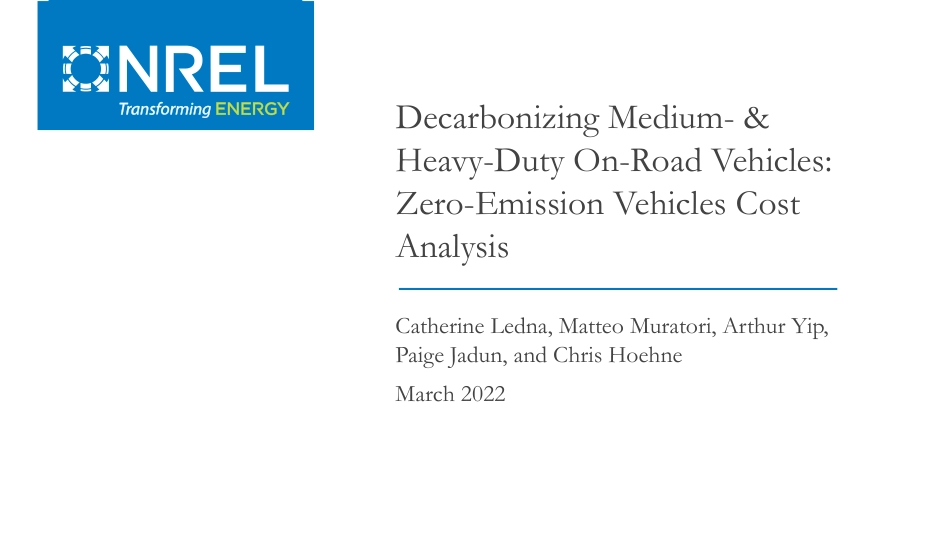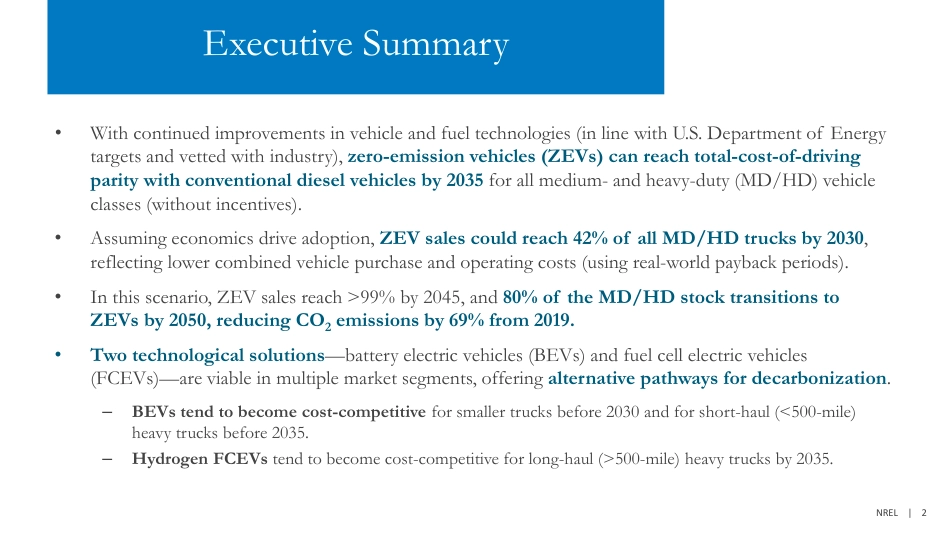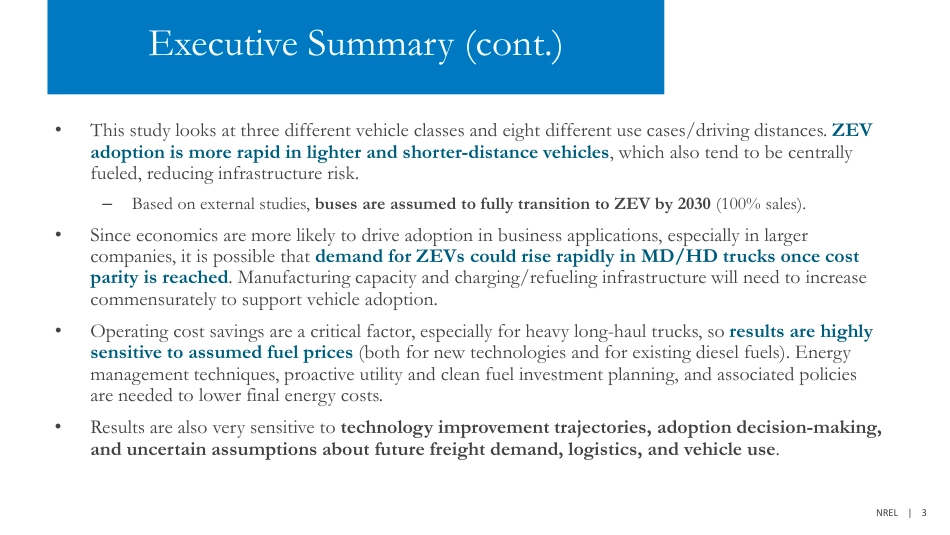Decarbonizing Medium- & Heavy-Duty On-Road Vehicles: Zero-Emission Vehicles Cost AnalysisCatherine Ledna, Matteo Muratori, Arthur Yip, Paige Jadun, and Chris HoehneMarch 2022NREL | 2Executive Summary•With continued improvements in vehicle and fuel technologies (in line with U.S. Department of Energy targets and vetted with industry), zero-emission vehicles (ZEVs) can reach total-cost-of-driving parity with conventional diesel vehicles by 2035 for all medium- and heavy-duty (MD/HD) vehicle classes (without incentives).•Assuming economics drive adoption, ZEV sales could reach 42% of all MD/HD trucks by 2030, reflecting lower combined vehicle purchase and operating costs (using real-world payback periods).•In this scenario, ZEV sales reach >99% by 2045, and 80% of the MD/HD stock transitions to ZEVs by 2050, reducing CO2 emissions by 69% from 2019. •Two technological solutions—battery electric vehicles (BEVs) and fuel cell electric vehicles (FCEVs)—are viable in multiple market segments, offering alternative pathways for decarbonization.–BEVs tend to become cost-competitive for smaller trucks before 2030 and for short-haul (<500-mile) heavy trucks before 2035.–Hydrogen FCEVs tend to become cost-competitive for long-haul (>500-mile) heavy trucks by 2035. NREL | 3Executive Summary (cont.)•This study looks at three different vehicle classes and eight different use cases/driving distances. ZEV adoption is more rapid in lighter and shorter-distance vehicles, which also tend to be centrally fueled, reducing infrastructure risk. –Based on external studies, buses are assumed to fully transition to ZEV by 2030 (100% sales).•Since economics are more likely to drive adoption in business applications, especially in larger companies, i...



